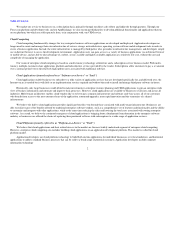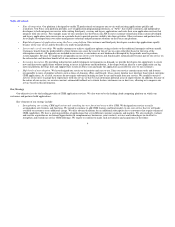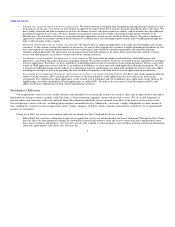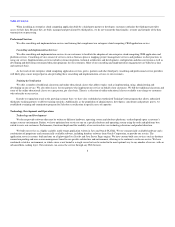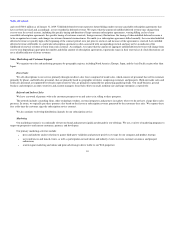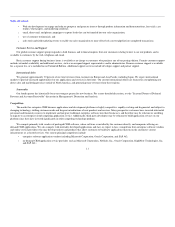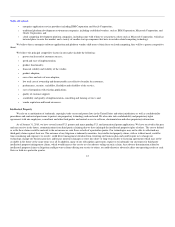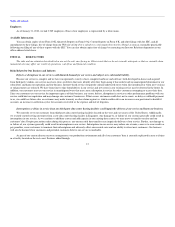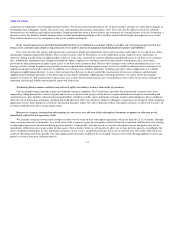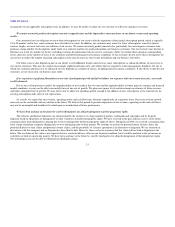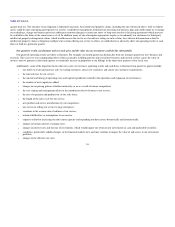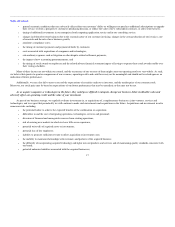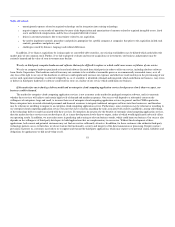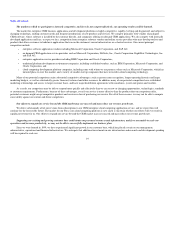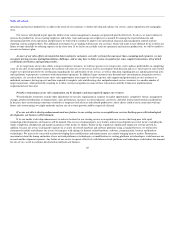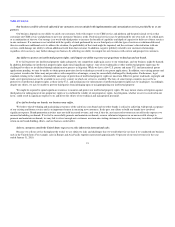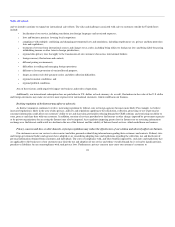Salesforce.com 2009 Annual Report Download - page 15
Download and view the complete annual report
Please find page 15 of the 2009 Salesforce.com annual report below. You can navigate through the pages in the report by either clicking on the pages listed below, or by using the keyword search tool below to find specific information within the annual report.
Table of Contents
• enterprise application service providers including IBM Corporation and Oracle Corporation;
• traditional platform development environment companies, including established vendors, such as IBM Corporation, Microsoft Corporation, and
Oracle Corporation; and
• cloud computing development platform companies, including some with whom we are partners, others such as Microsoft Corporation, which has
initiated plans to enter this market, and a variety of smaller start up companies that have invested in cloud computing technology.
We believe that as enterprise software application and platform vendors shift more of their focus to cloud computing, they will be a greater competitive
threat.
We believe the principal competitive factors in our market include the following:
• proven track record of customer success;
• speed and ease of implementation;
• product functionality;
• financial stability and viability of the vendor;
• product adoption;
• ease of use and rates of user adoption;
• low total cost of ownership and demonstrable cost-effective benefits for customers;
• performance, security, scalability, flexibility and reliability of the service;
• ease of integration with existing applications;
• quality of customer support;
• availability and quality of implementation, consulting and training services; and
• vendor reputation and brand awareness.
Intellectual Property
We rely on a combination of trademark, copyright, trade secret and patent laws in the United States and other jurisdictions as well as confidentiality
procedures and contractual provisions to protect our proprietary technology and our brand. We also enter into confidentiality and proprietary rights
agreements with our employees, consultants and other third parties and control access to software, documentation and other proprietary information.
As of January 31, 2010, we have several issued U.S. patents and many pending U.S. and international patent applications. We have received in the past,
and may receive in the future, communications from third parties claiming that we have infringed the intellectual property rights of others. The cost to defend
or settle these claims could be material to the net income or cash flows or both of a particular quarter. Our technologies may not be able to withstand any
third-party claims against their use. The outcome of any litigation is inherently uncertain. Any intellectual property claims, with or without merit, could be
time-consuming and expensive to resolve, could divert management attention from executing our business plan and could require us to change our
technology, change our business practices and/or pay monetary damages or enter into short- or long-term royalty or licensing agreements which may not be
available in the future at the same terms or at all. In addition, many of our subscription agreements require us to indemnify our customers for third-party
intellectual property infringement claims, which would increase the cost to us of an adverse ruling on such a claim. Any adverse determination related to
intellectual property claims or litigation could prevent us from offering our service to others, or could otherwise adversely affect our operating results or cash
flows or both in a particular quarter.
12


